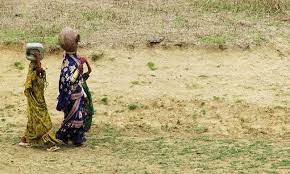LONDON (Reuters): With roles spanning planting, growing and harvesting of crops, as well as processing, logistics and selling produce, female workers hold a crucial role in agricultural supply chains. Globally, around 38 per cent of workers in agricultural supply chains are female, though this varies according to region – in Sub-Saharan Africa it is 50pc, according to the UN Food and Agriculture Organization (FAO).
However, many female agricultural workers lack access to the basic health services needed to live healthy, productive lives. Most are low-wage smallholder farmers who are not covered by on-site employer health programmes. Plantations are often remote and far from health facilities.
Companies and their suppliers can play a huge role to improve women’s health, either directly or partnering with government health services, according to David Wofford, senior director of private sector strategy and engagement for the Universal Access Project (UAP) at the UN Foundation. UAP promotes best practice and funds research both in agricultural and manufacturing supply chains.
In addition, the proportion of women in the agricultural workforce is increasing in many regions as men migrate to work in urban areas, making supply-chain resilience even more reliant on women’s health, he notes. According to the FAO, the ratio of female workers compared with men has risen in several countries, including Colombia, Ecuador, Nepal and Bangladesh.
“If businesses don’t address the needs of female workers, they will have huge problems in the future. In addition, women spend the most money on the family health and children’s education so companies have a huge opportunity to support climate resilience by investing in the health of female workers,” Wofford says.
And while companies “talk a good game” about addressing women health, when it comes to strategic decision-making, responsible sourcing and sustainability departments tended to be the least resourced and least powerful part of a company, he says.
Their teams are rewarded for price, quality and speed, with worker health seen as a “soft” issue. In addition, health and social issues were generally a lower priority for businesses compared with climate mitigation.
“Social problems tend to be very complex and require thoughtful investments that don’t necessarily have an easy return on investment. There are huge business benefits in investing in worker and women’s health, but it’s not as easy to document quantitatively, as some of the technical changes that companies invest in,” he says.
The UN Foundation is soon to launch a new set of commitments to women’s health in corporate supply chains. It has also created a pooled corporate fund that invests in women-led organisations working in supply chain communities, and an accountability platform to aid transparency to campaign organisations, business and labour groups.
Several corporates have been taking action on the healthcare issues of their female workers. BSR, the sustainable business network and consultancy, has a health programme in its HERproject, helping brands and their suppliers implement workplace-based interventions to support women.
The R Twining and Company, for example, is providing female tea workers in its Kenyan supply chain with reproductive health information, and 50,000 women across Kenya and India with access to essential health services and products.
Separately, ingredients supplier OFI uses its local teams in producer countries to provide nutrition training, advice and health screenings to thousands of farmers, workers and their families. In Ivory Coast, for example, where malnutrition contributes to the stunted growth and development of one in five children, OFI’s cashew team partnered with the National Nutrition Programme to geo-locate and screen over 2,500 children in cashew communities using a smartphone-based application to identify infant malnutrition.
As a result, 49 moderate and acute cases were identified and referred to healthcare facilities, and 10 boreholes were installed to provide communities with access to safe drinking water.
Flora Coffi Sika, OFI sustainability lead in Africa, says that though iron deficiencies are common in Ivory Coast, this is particularly a problem for pregnant and lactating women. OFI has provided iron supplements, alongside nutrition and sanitation advice for women both in its supply chain and surrounding communities. It has also provided meals of beans, eggs and bananas in the Democratic Republic of Congo, where there was a problem with malnutrition.
“The communities very often turn to us for help because we are with them on a day-to-day basis. You can have access to a very, very large number of people through women in the workforce and the community around,” she says. These types of programmes can be challenging both in terms of staffing and finance, so OFI often works with partners, such as its customers or third parties who can support with logistics or tools and materials, she says.
But such projects are thin on the ground, particularly in the face of the multiplier effect of climate change, with extreme heat and flooding worsening women’s economic situation across the global south, pushing millions of women further into poverty.
WOMEN IN PAKISTAN
The non-profit Climate Resilience for All says women are disproportionately harmed by climate change – many women working outdoors and in dangerously hot indoor conditions in India report problems including year-round rashes, miscarriages, urinary tract infections, dizziness, crop losses, loss of income.
In Peshawar, Pakistan, women have reported constant illness due to heat, skin diseases due to lack of access to clean water, unbearable hygienic conditions and vaccination rates declining due to a lack of refrigeration in never-before-experienced high temperatures, the organisation said.
Women are less able to adapt to heat than men, explains Kathy Baughman McLeod, chief executive of Climate Resilience. In Pakistan, hot and crowded homes cause sleepless nights for all, but cultural norms require women to stay indoors, while men can seek cooler conditions outside.
“The health effects are growing and they’re compounding – they’re social, they’re physiological and they’re financial,” she says.
She gives the example of the Indian Self Employed Women’s Association, a labour union with almost three million members.
They have access to health care and banking, but that does not protect them from extreme heat.
“When shifts are pushed to the night-time to deal with the heat, the men can work those shifts, but women can’t because they have to care for their kids. High temperatures are making the fruit, vegetables and meat they sell rancid before they can sell it. This hit and miss income then means food insecurity, nutritional deficits and all the things that come from that,” she says.
At COP28, Climate Resilience for All launched a new type of insurance to support 150,000 women in India and Pakistan dealing with extreme heat and floods. The Women’s Climate Shock Insurance Initiative will provide insurance from reinsurance company Swiss Re, which provides direct income support to individual women in the case of harmful heat and flooding.
The scheme uses a type of payout known as parametric insurance. This insures a policyholder against the occurrence of a specific event by paying a set amount based on the magnitude of the event, rather than the magnitude of the losses.
Parametric insurance is a lot faster than typical indemnity policies, explains Baughman McLeod. The idea is that their incomes are protected so they do not need to work in dangerous conditions. “It’s the event that triggers the payment, not the damage. They don’t need to prove it – we know that if they are working outside in certain conditions, they are at risk,” she says.
Sensors are located in places where they are working to judge the temperatures that the women’s’ bodies are being exposed to. The early warning system alerts them via WhatsApp to when temperatures will be extreme so that they can adjust their plans to avoid the worst impacts.
The programme also provides participants with their choice of protective equipment, such as a tarp for shade, cool box or solar-powered lights. It will also pilot an early warning system and corresponding targeted guidance for specific communities and geographies. Lastly, it provides participants with bank accounts and banking applications for those with smartphones.
Separate corporate donors – due to be announced soon – are providing funding for the premium, the early warning system and the protective equipment. “Worker productivity losses are in the billions and billions of dollars, and it’s silent and invisible,” she says. Wofford is optimistic that corporates will increasingly see the benefits of investing in the health of women in their supply chain. “What drives change is the realities on the ground. And the reality is that companies are going to have to be more resilient to climate change, and that means investing in the communities around them, and the people who are most important in many ways to resilience are women.”
But he cautions that corporates need to avoid the mistakes of the past. “Businesses need to think about how they connect in new sustainable ways that are systemic across both operations and communities they work within, not just one-off nice programmes that they can point to every couple of years to say that they’re doing something for their community.”







